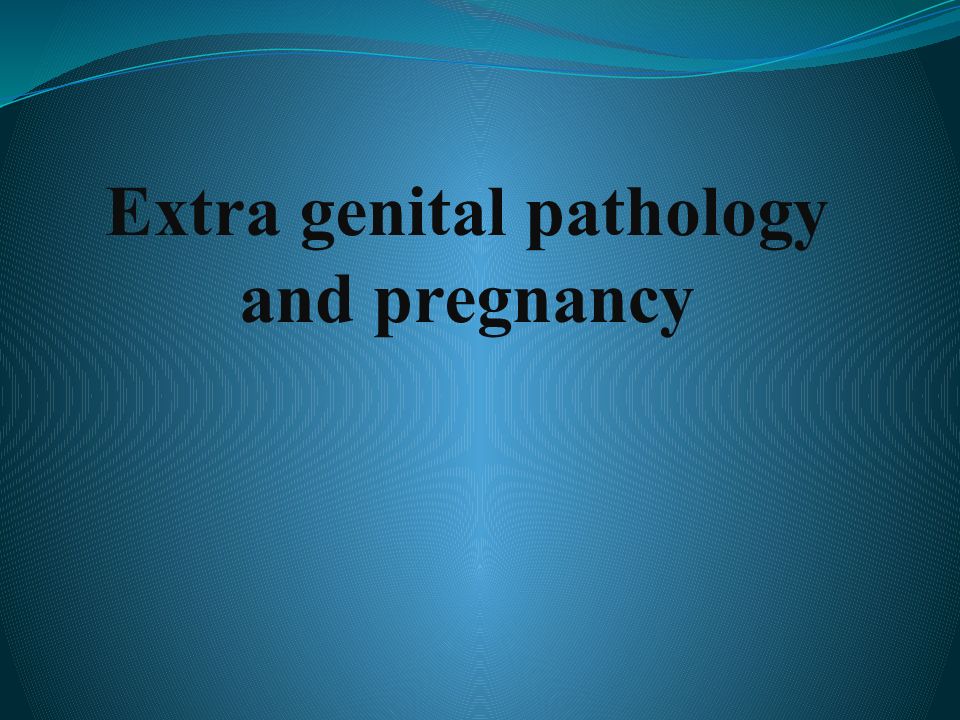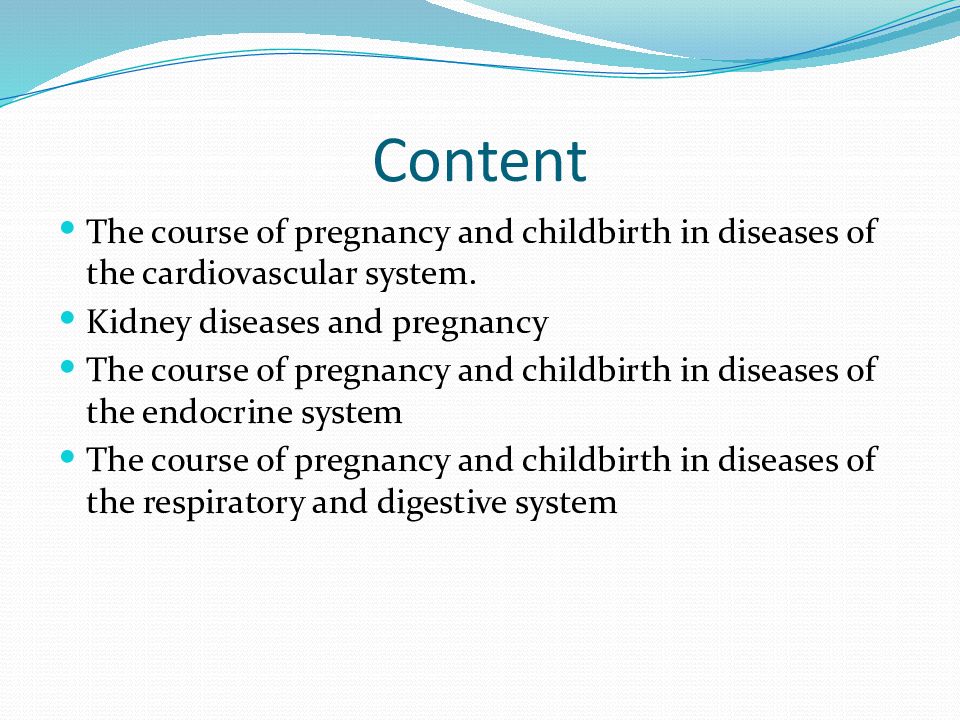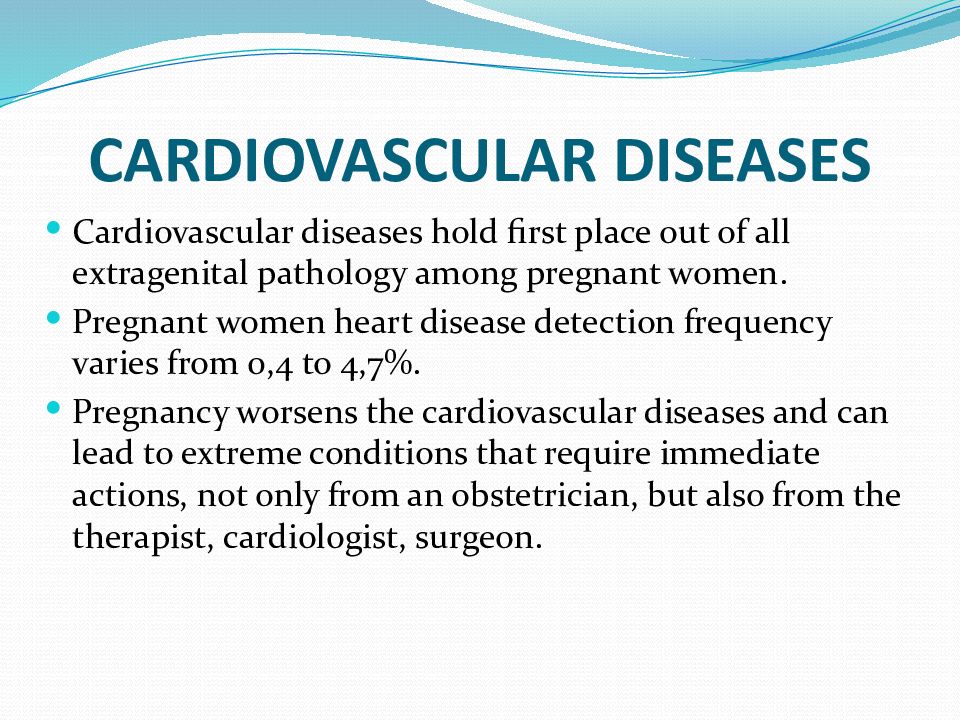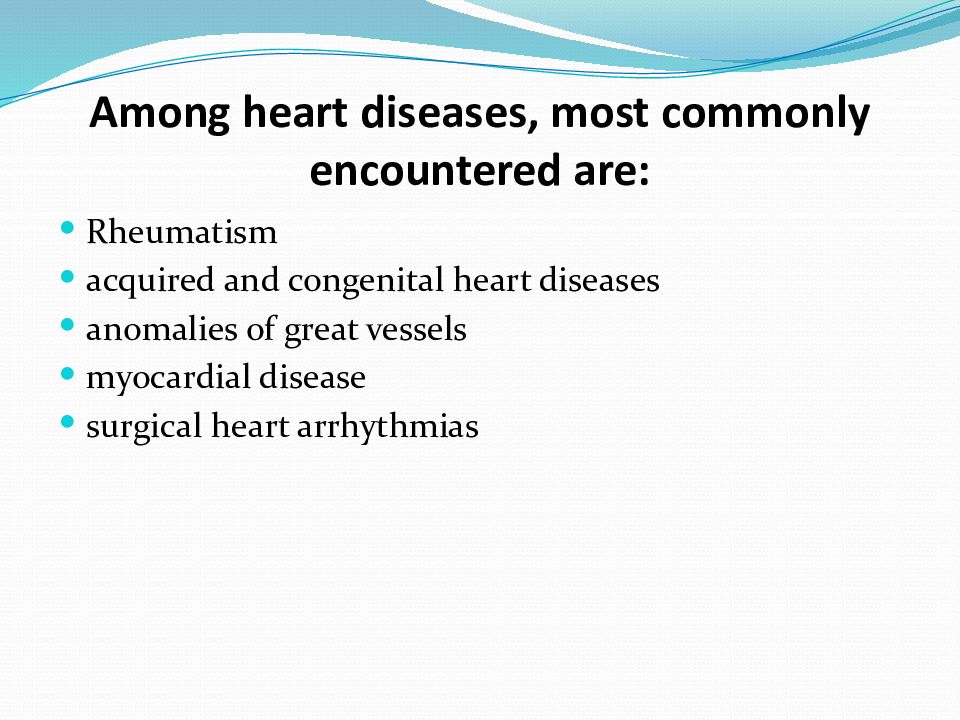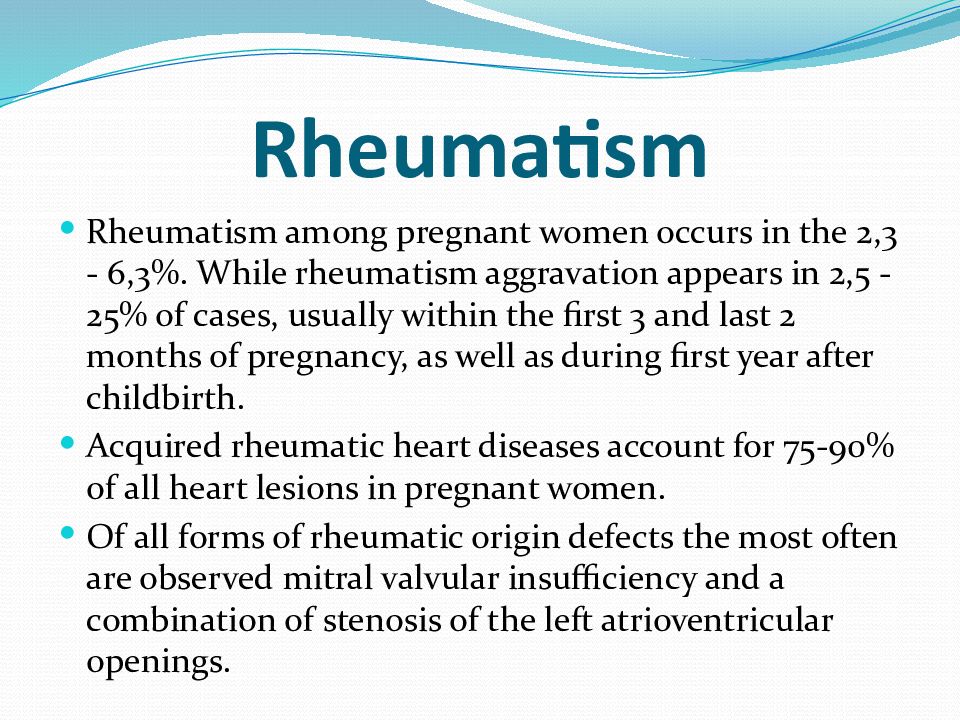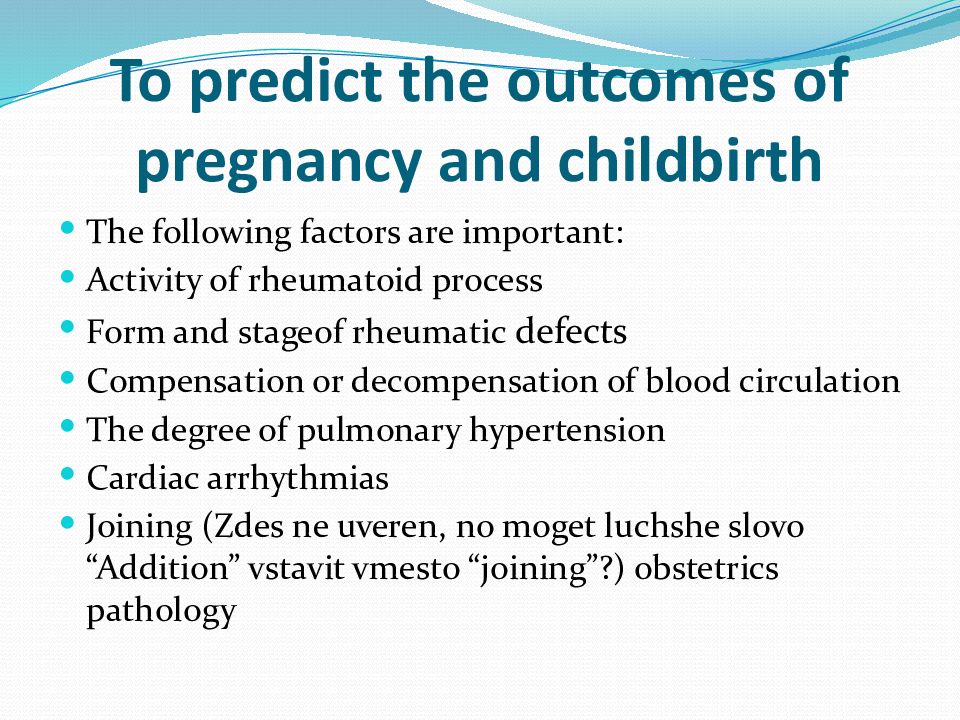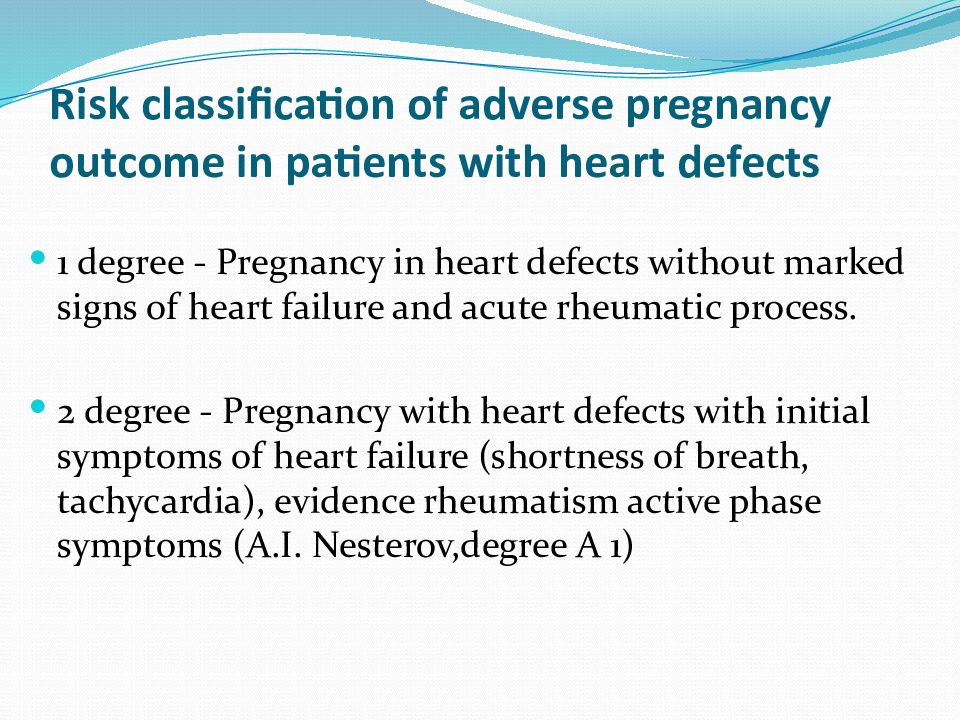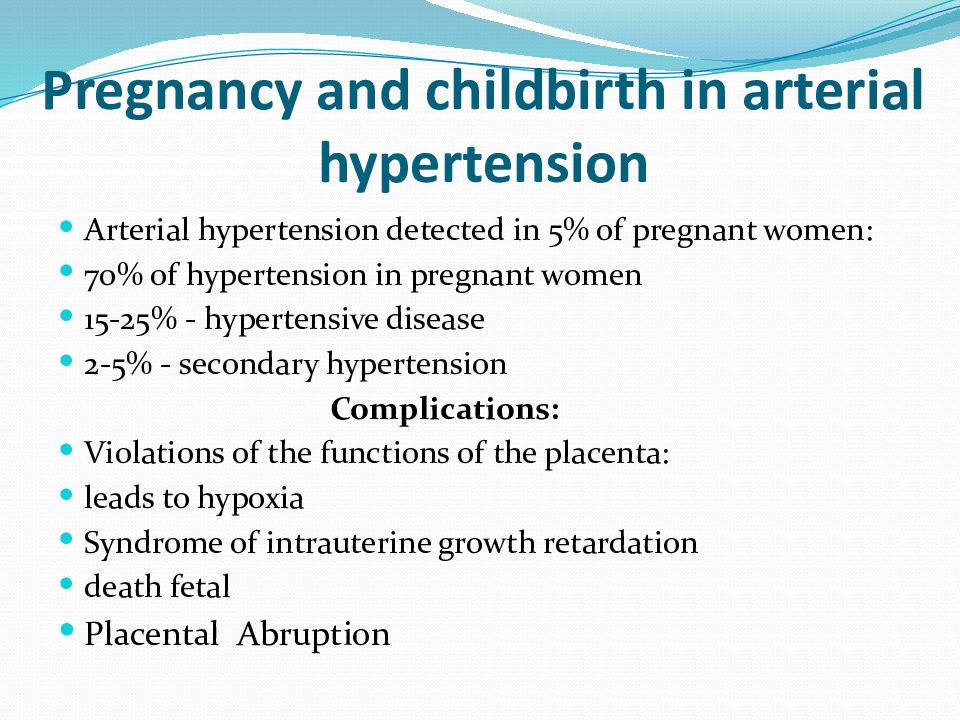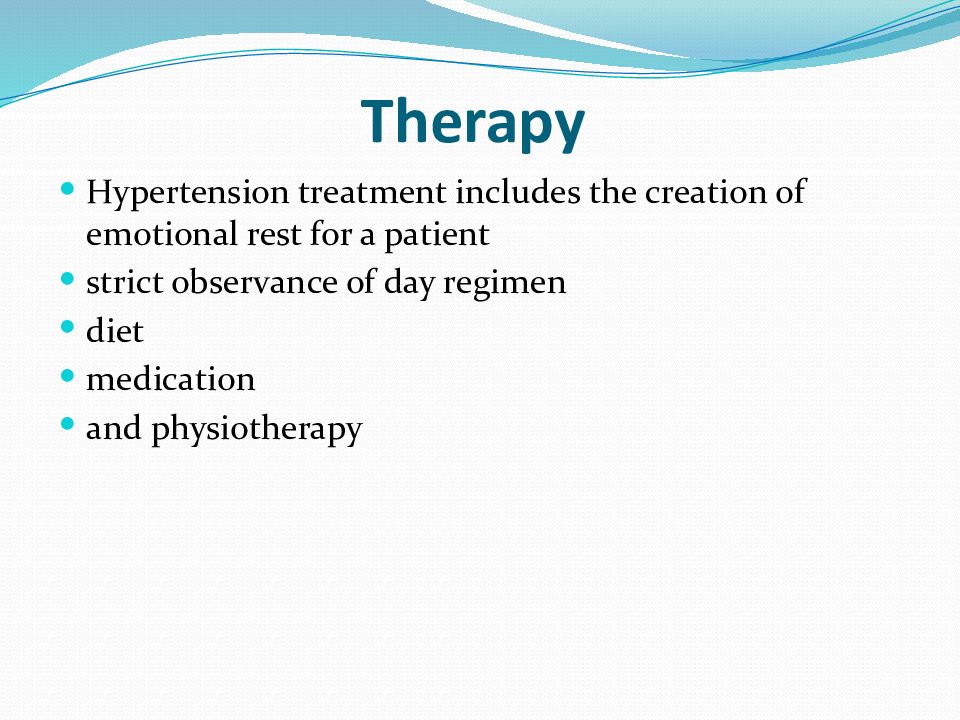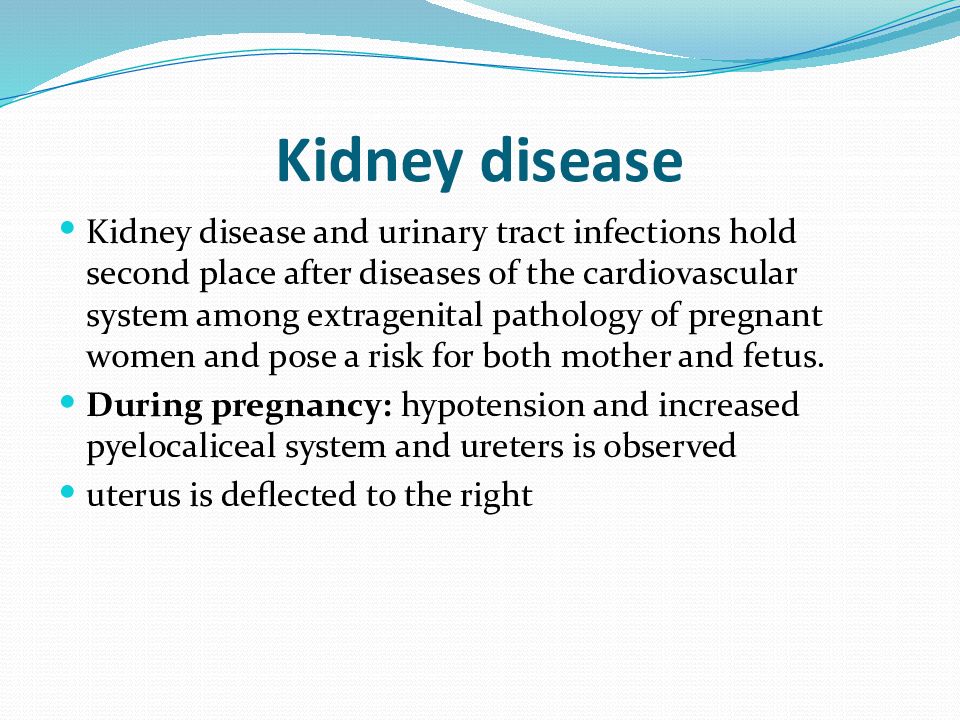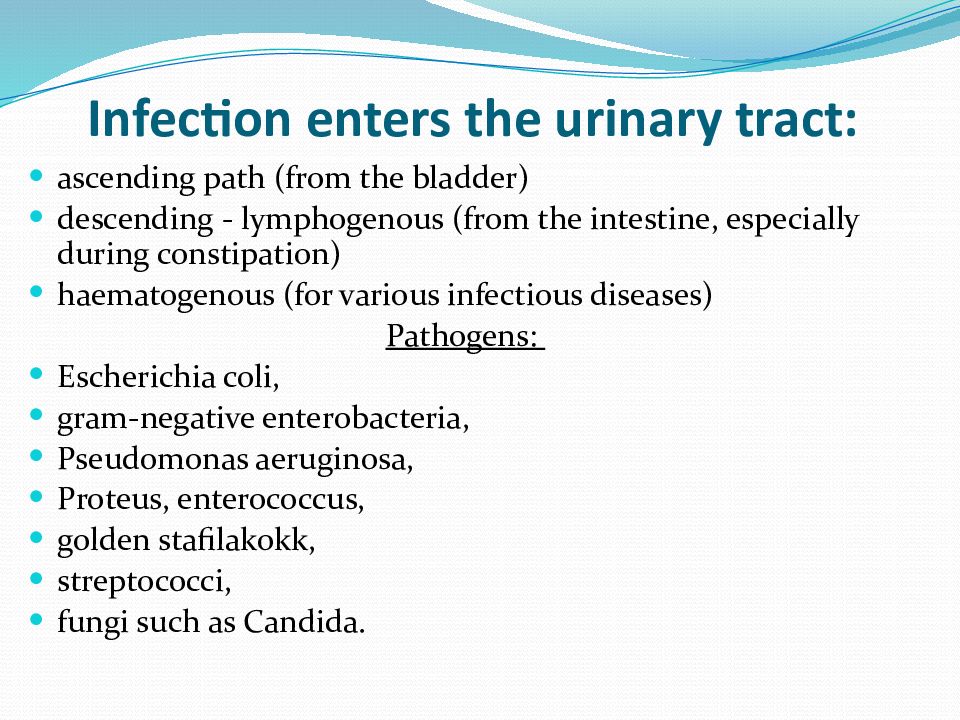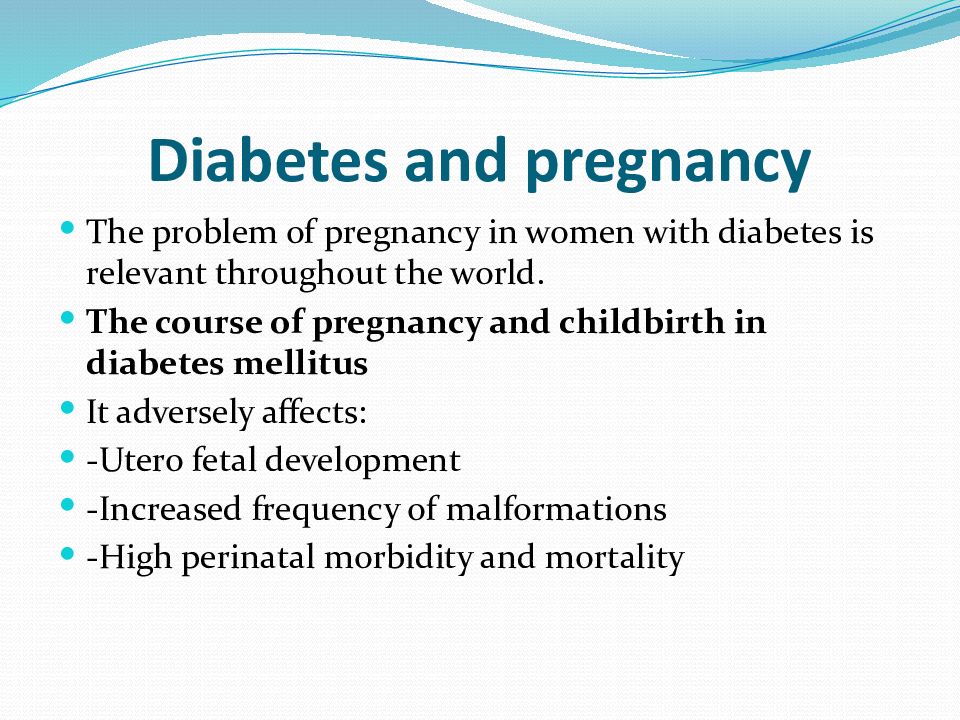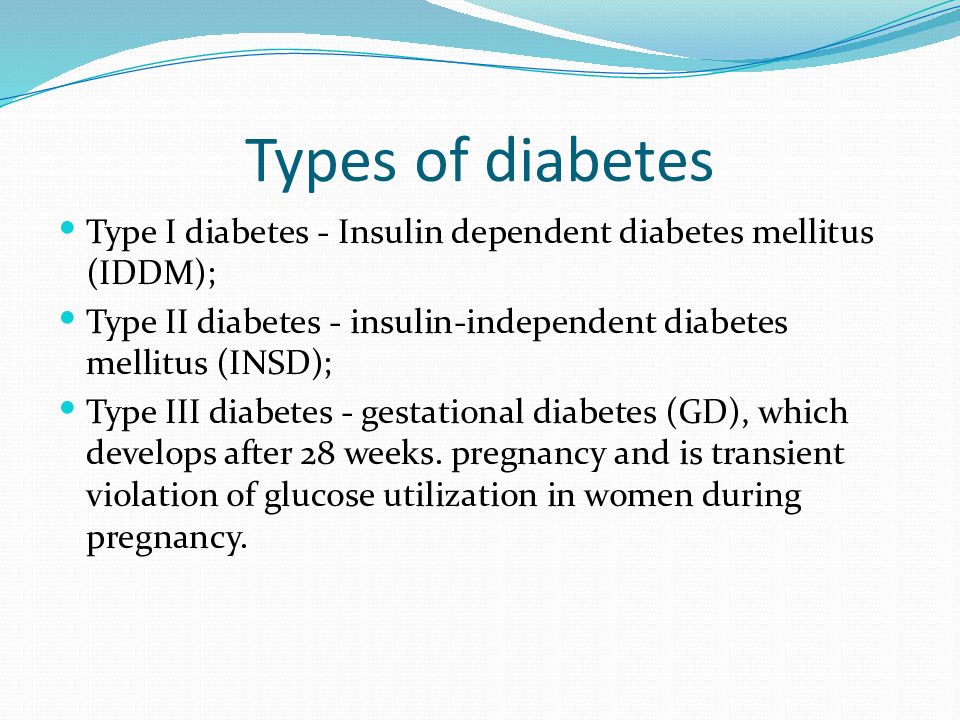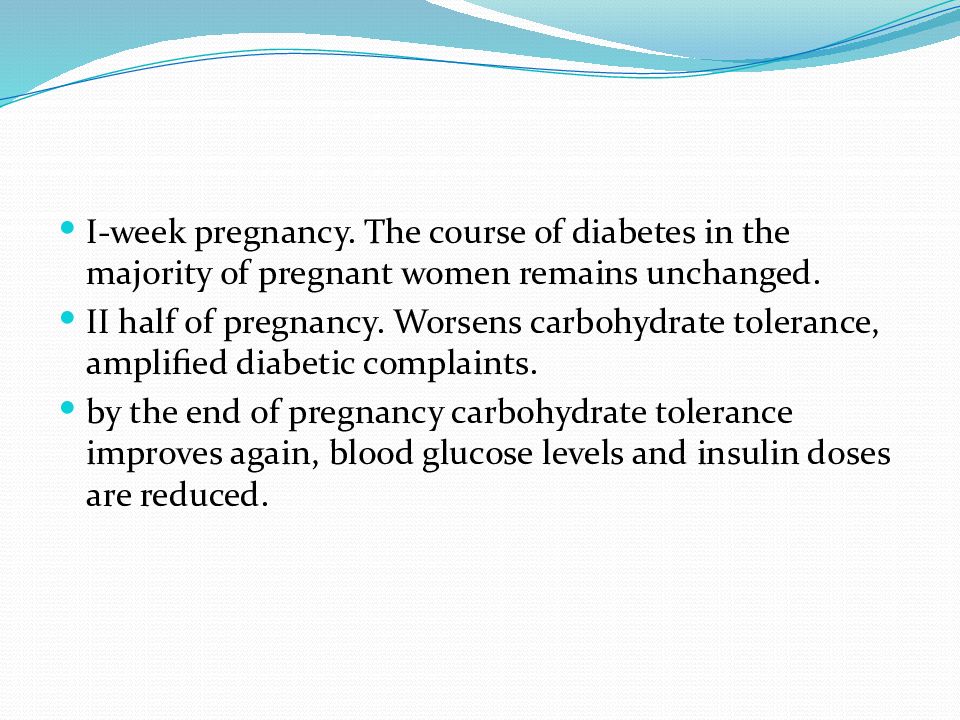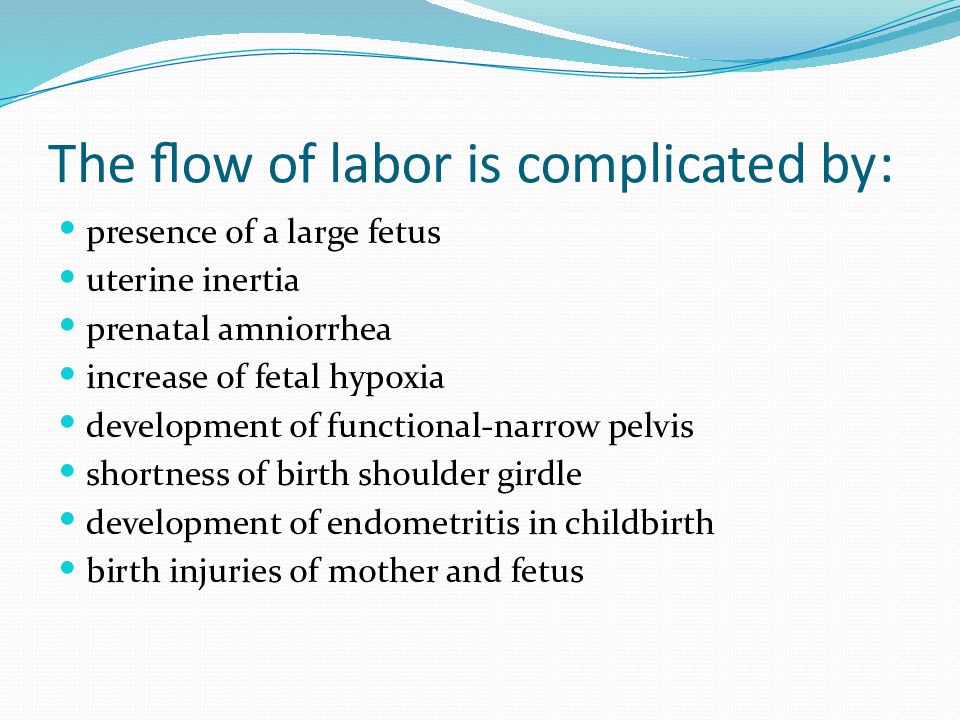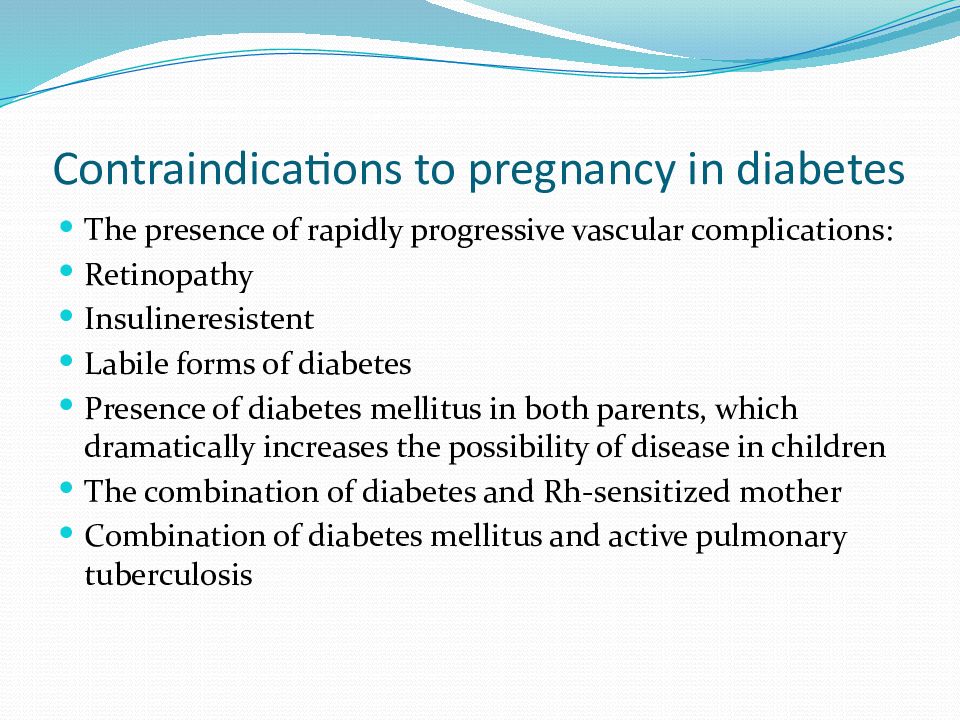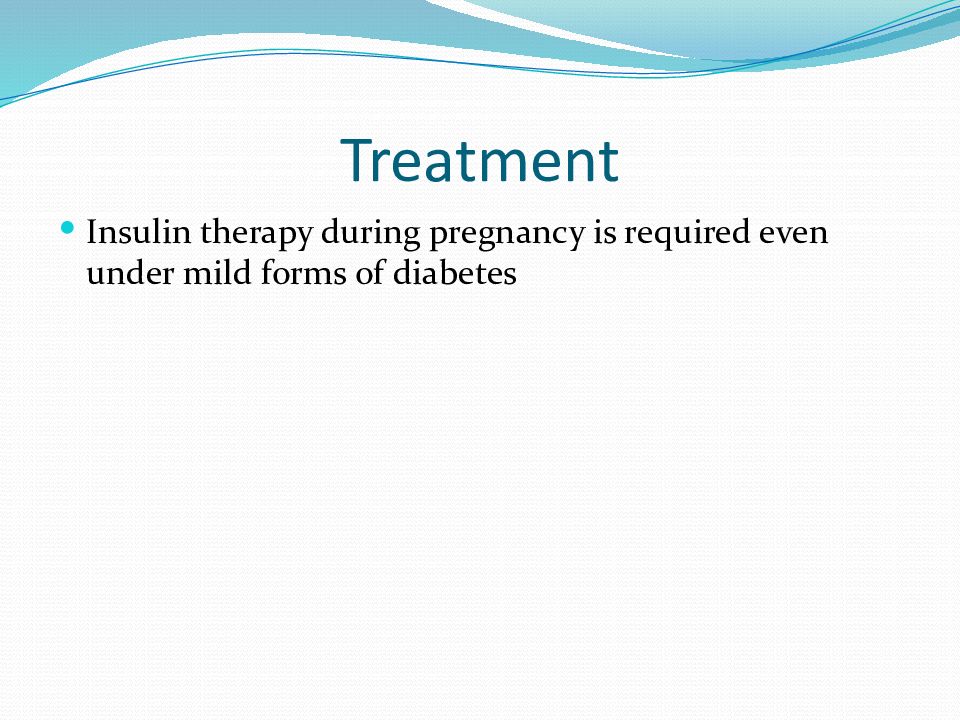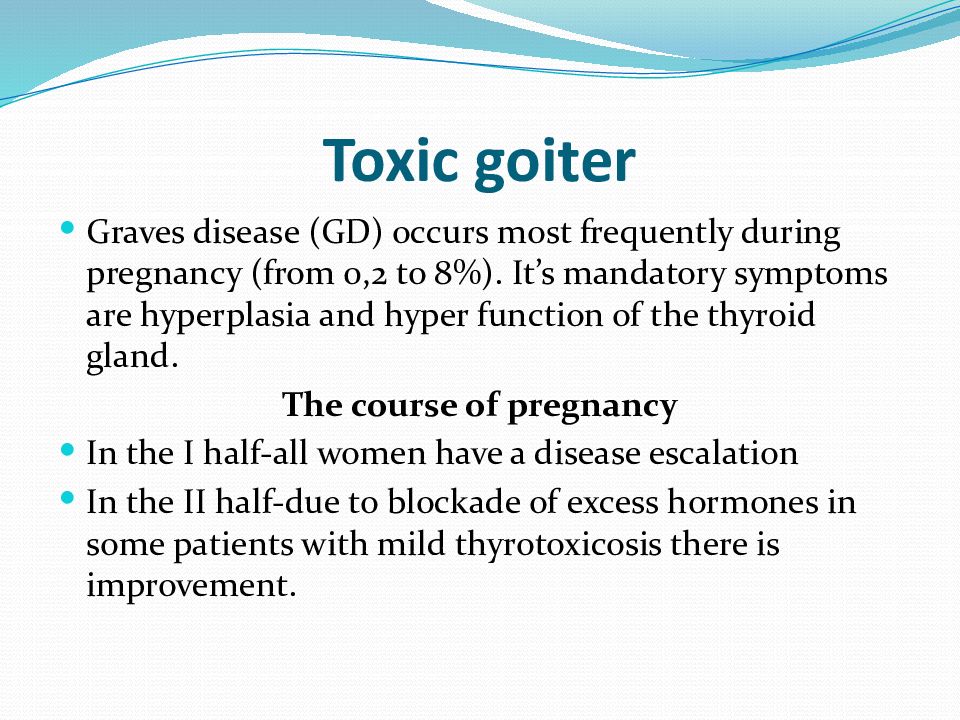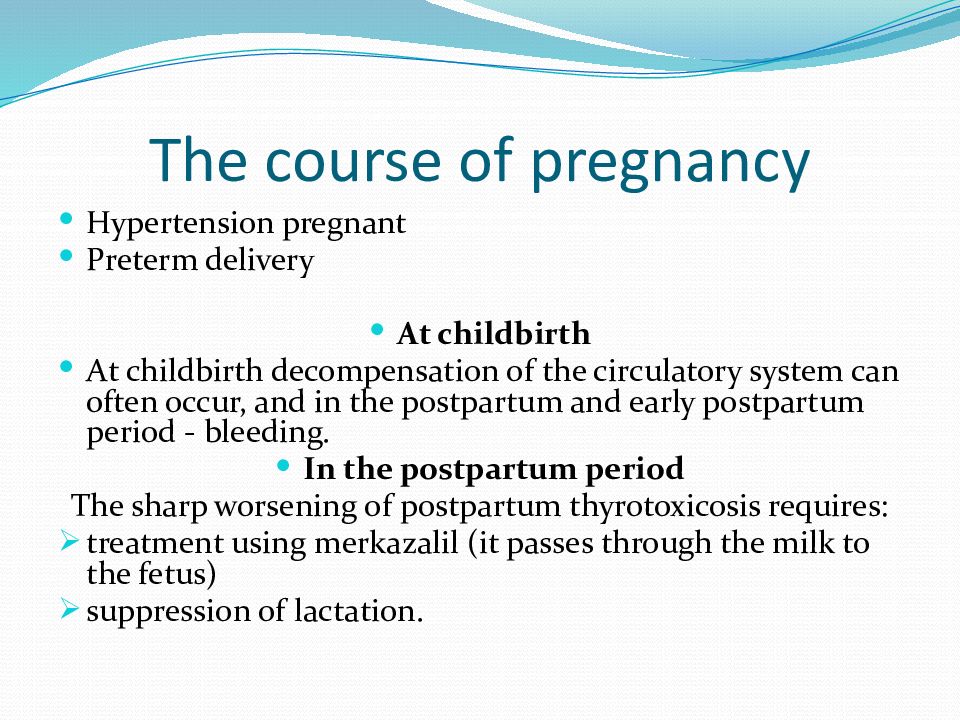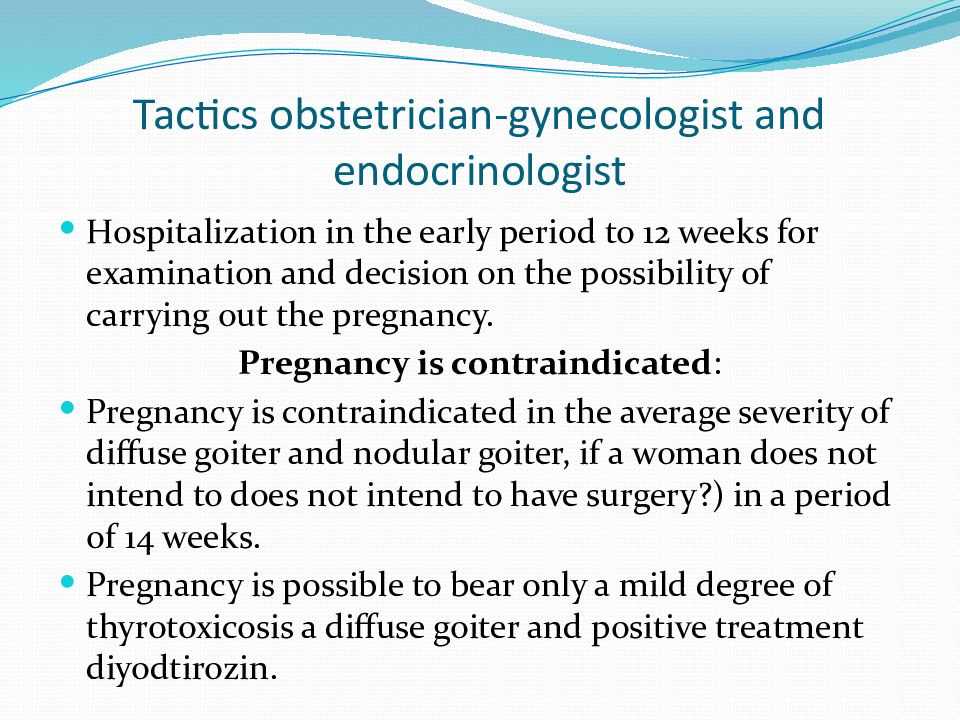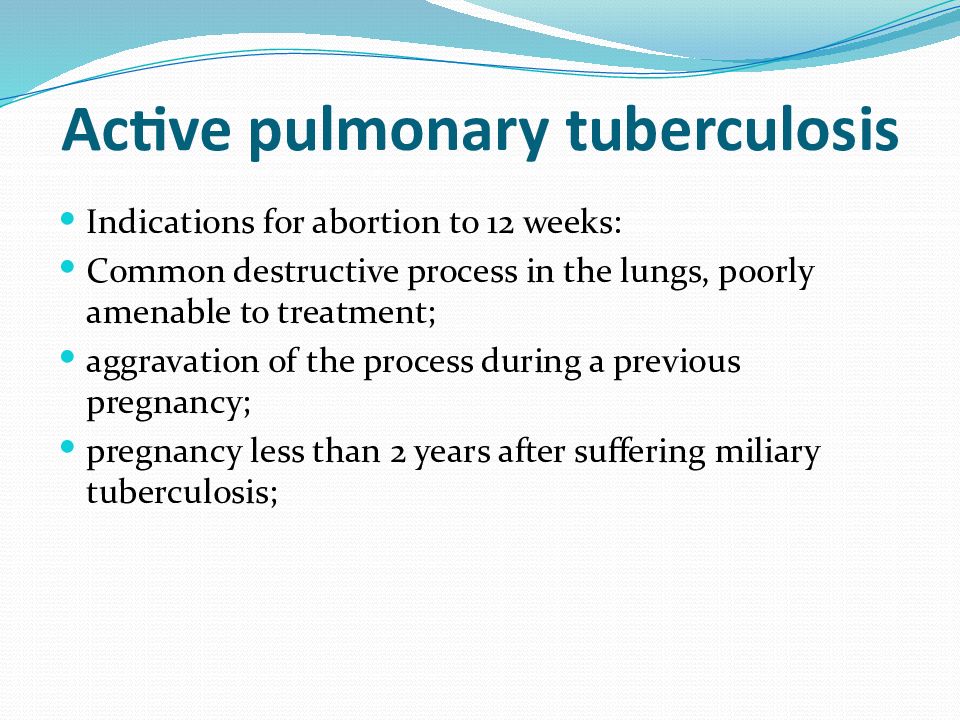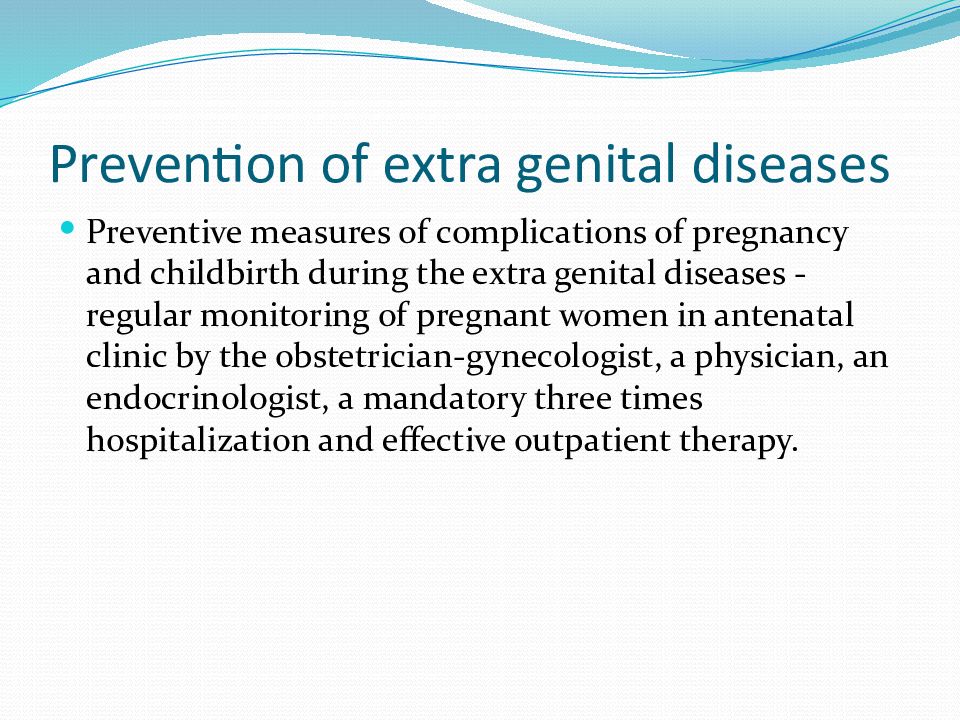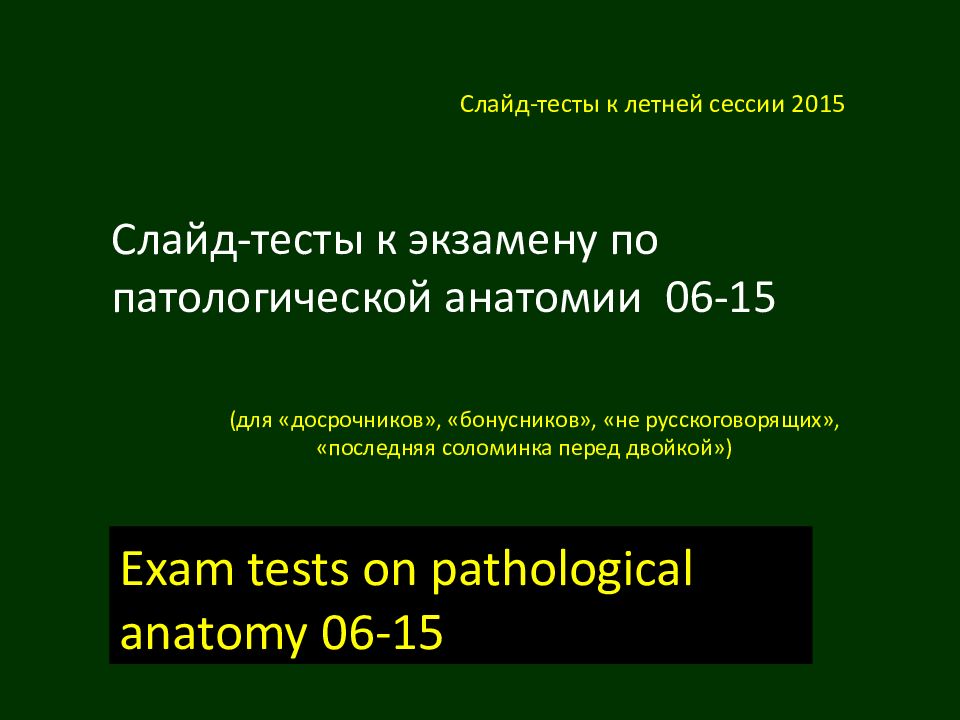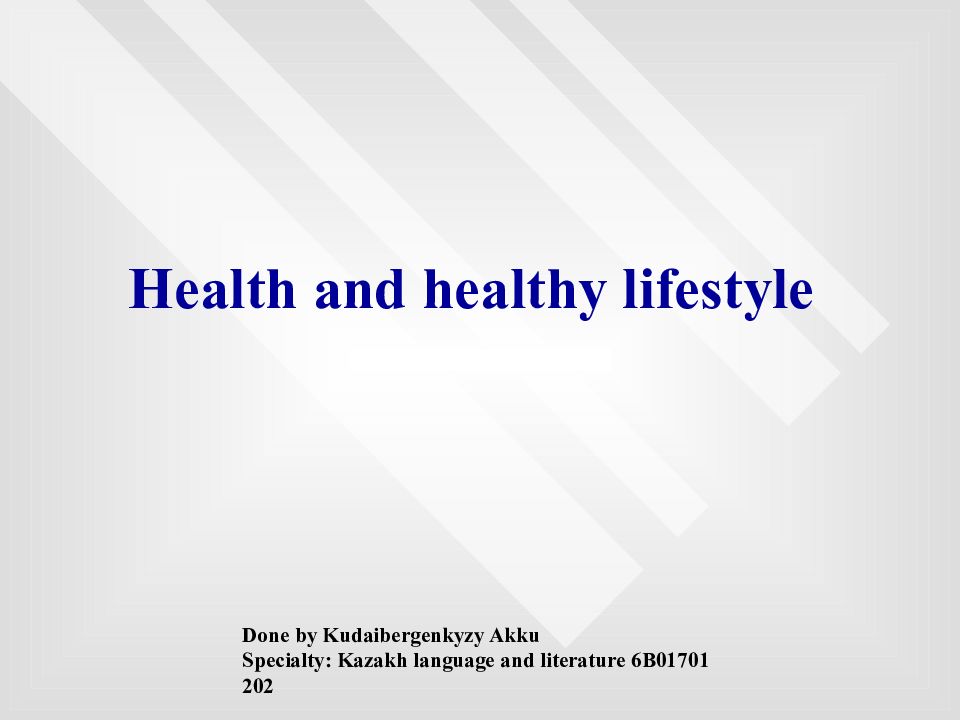Первый слайд презентации: Extra genital pathology and pregnancy
Слайд 2: Content
The course of pregnancy and childbirth in diseases of the cardiovascular system. Kidney diseases and pregnancy The course of pregnancy and childbirth in diseases of the endocrine system The course of pregnancy and childbirth in diseases of the respiratory and digestive system
Слайд 3: CARDIOVASCULAR DISEASES
Cardiovascular diseases hold first place out of all extragenital pathology among pregnant women. Pregnant women heart disease detection frequency varies from 0,4 to 4,7%. Pregnancy worsens the cardiovascular diseases and can lead to extreme conditions that require immediate actions, not only from an obstetrician, but also from the therapist, cardiologist, surgeon.
Rheumatism acquired and congenital heart diseases anomalies of great vessels myocardial disease surgical heart arrhythmias
Слайд 5: Rheumatism
Rheumatism among pregnant women occurs in the 2,3 - 6,3%. While rheumatism aggravation appears in 2,5 - 25% of cases, usually within the first 3 and last 2 months of pregnancy, as well as during first year after childbirth. Acquired rheumatic heart diseases account for 75-90% of all heart lesions in pregnant women. Of all forms of rheumatic origin defects the most often are observed mitral valvular insufficiency and a combination of stenosis of the left atrioventricular openings.
The following factors are important: Activity of rheumatoid process Form and stageof rheumatic defects Compensation or decompensation of blood circulation The degree of pulmonary hypertension Cardiac arrhythmias Joining ( Zdes ne uveren, no moget luchshe slovo “Addition” vstavit vmesto “joining”?) obstetrics pathology
Слайд 7: Risk classification of adverse pregnancy outcome in patients with heart defects
1 degree - Pregnancy in heart defects without marked signs of heart failure and acute rheumatic process. 2 degree - Pregnancy with heart defects with initial symptoms of heart failure (shortness of breath, tachycardia), evidence rheumatism active phase symptoms (A. I. Nesterov,degree A 1 )
Слайд 8
3 degree - Pregnancy in decompensated heart defect with signs of the predominance of right heart failure, presence of the active phase of rheumatism (A 2), atrial fibrillation, pulmonary hypertension. 4 degree - Pregnancy in decompensated heart defect with signs of left ventricular failure, atrial fibrillation, thromboembolic manifestations of pulmonary hypertension. According to this scheme continuation of the pregnancy is permissible, with 1 and 2 degree of risk, only under the supervision of an outpatient and cardioobsterical facility and with a 3 time hospitalization
Слайд 9: Pregnancy and childbirth in arterial hypertension
Arterial hypertension detected in 5% of pregnant women: 70% of hypertension in pregnant women 15-25% - hypertensive disease 2-5% - secondary hypertension Complications: Violations of the functions of the placenta: leads to hypoxia Syndrome of intrauterine growth retardation death fetal Placental Abruption
Слайд 10: Therapy
Hypertension treatment includes the creation of emotional rest for a patient strict observance of day regimen diet medication and physiotherapy
Слайд 11: Kidney disease
Kidney disease and urinary tract infections hold second place after diseases of the cardiovascular system among extragenital pathology of pregnant women and pose a risk for both mother and fetus. During pregnancy: hypotension and increased pyelocaliceal system and ureters is observed uterus is deflected to the right
Слайд 12: Infection enters the urinary tract:
ascending path (from the bladder) descending - lymphogenous (from the intestine, especially during constipation) haematogenous (for various infectious diseases) Pathogens : Escherichia coli, gram-negative enterobacteria, Pseudomonas aeruginosa, Proteus, enterococcus, golden stafilakokk, streptococci, fungi such as Candida.
Слайд 13: Clinical forms
Common clinical forms should be noted- pyelonephritis, hydronephrosis, asymptomatic bacteriuria Rarely - glomerulonephritis, tuberculosis kidney, urolithiasis, developmental anomalies of the urinary tract. Pyelonephritis - is the most frequent disease during pregnancy (from 6 to 12%), its when concentrating ability of the kidneys suffers. Pyelonephritis has a negative effect on pregnancy and the fetus.
Слайд 14: Diabetes and pregnancy
The problem of pregnancy in women with diabetes is relevant throughout the world. The course of pregnancy and childbirth in diabetes mellitus It adversely affects: -Utero fetal development -Increased frequency of malformations -High perinatal morbidity and mortality
Слайд 15: Types of diabetes
Type I diabetes - Insulin dependent diabetes mellitus (IDDM); Type II diabetes - insulin-independent diabetes mellitus (INSD); Type III diabetes - gestational diabetes (GD), which develops after 28 weeks. pregnancy and is transient violation of glucose utilization in women during pregnancy.
Слайд 16
The most frequent is insulin dependent diabetes mellitus (IDDM). The disease is usually diagnosed in girls in childhood, during puberty. Insulin-independent diabetes mellitus (INSD) occurs in older women (after 30 years), and it proceeds less seriously. Gestational diabetes is diagnosed very rarely.
Слайд 17
I-week pregnancy. The course of diabetes in the majority of pregnant women remains unchanged. II half of pregnancy. Worsens carbohydrate tolerance, amplified diabetic complaints. by the end of pregnancy carbohydrate tolerance improves again, blood glucose levels and insulin doses are reduced.
Слайд 18: At childbirth
High hypergikemiya, the state of acidosis and hypoglycemic state is possible in pregnant women with diabetes. Obstetric complications in the second half of pregnancy : hypertension of pregnant polyhydramnios risk of preterm birth fetal hypoxia urinary tract infections
Слайд 19: The flow of labor is complicated by :
presence of a large fetus uterine inertia prenatal amniorrhea increase of fetal hypoxia development of functional-narrow pelvis shortness of birth shoulder girdle development of endometritis in childbirth birth injuries of mother and fetus
Слайд 20: Contraindications to pregnancy in diabetes
The presence of rapidly progressive vascular complications: Retinopathy Insulineresistent Labile forms of diabetes Presence of diabetes mellitus in both parents, which dramatically increases the possibility of disease in children The combination of diabetes and Rh -sensitized mother Combination of diabetes mellitus and active pulmonary tuberculosis
Слайд 21: Treatment
Insulin therapy during pregnancy is required even under mild forms of diabetes
Слайд 22: Thyroid disease and pregnancy
The thyroid gland - is an endocrine organ that produces hormones essential for organism - thyroxine (or tetraiodothyronine - T4) and triiodothyronine (T3).
Слайд 23: Toxic goiter
Graves disease (GD) occurs most frequently during pregnancy (from 0,2 to 8%). It’s mandatory symptoms are hyperplasia and hyper function of the thyroid gland. The course of pregnancy In the I half-all women have a disease escalation In the II half-due to blockade of excess hormones in some patients with mild thyrotoxicosis there is improvement.
Слайд 24: The course of pregnancy
Hypertension pregnant Preterm delivery At childbirth At childbirth decompensation of the circulatory system can often occur, and in the postpartum and early postpartum period - bleeding. In the postpartum period The sharp worsening of postpartum thyrotoxicosis requires: treatment using merkazalil (it passes through the milk to the fetus) suppression of lactation.
Слайд 25: Tactics obstetrician-gynecologist and endocrinologist
Hospitalization in the early period to 12 weeks for examination and decision on the possibility of carrying out the pregnancy. Pregnancy is contraindicated : Pregnancy is contraindicated in the average severity of diffuse goiter and nodular goiter, if a woman does not intend to does not intend to have surgery?) in a period of 14 weeks. Pregnancy is possible to bear only a mild degree of thyrotoxicosis a diffuse goiter and positive treatment diyodtirozin.
Слайд 26: Active pulmonary tuberculosis
Indications for abortion to 12 weeks: Common destructive process in the lungs, poorly amenable to treatment; aggravation of the process during a previous pregnancy; pregnancy less than 2 years after suffering miliary tuberculosis;
Слайд 27: Prevention of extra genital diseases
Preventive measures of complications of pregnancy and childbirth during the extra genital diseases - regular monitoring of pregnant women in antenatal clinic by the obstetrician-gynecologist, a physician, an endocrinologist, a mandatory three times hospitalization and effective outpatient therapy.
